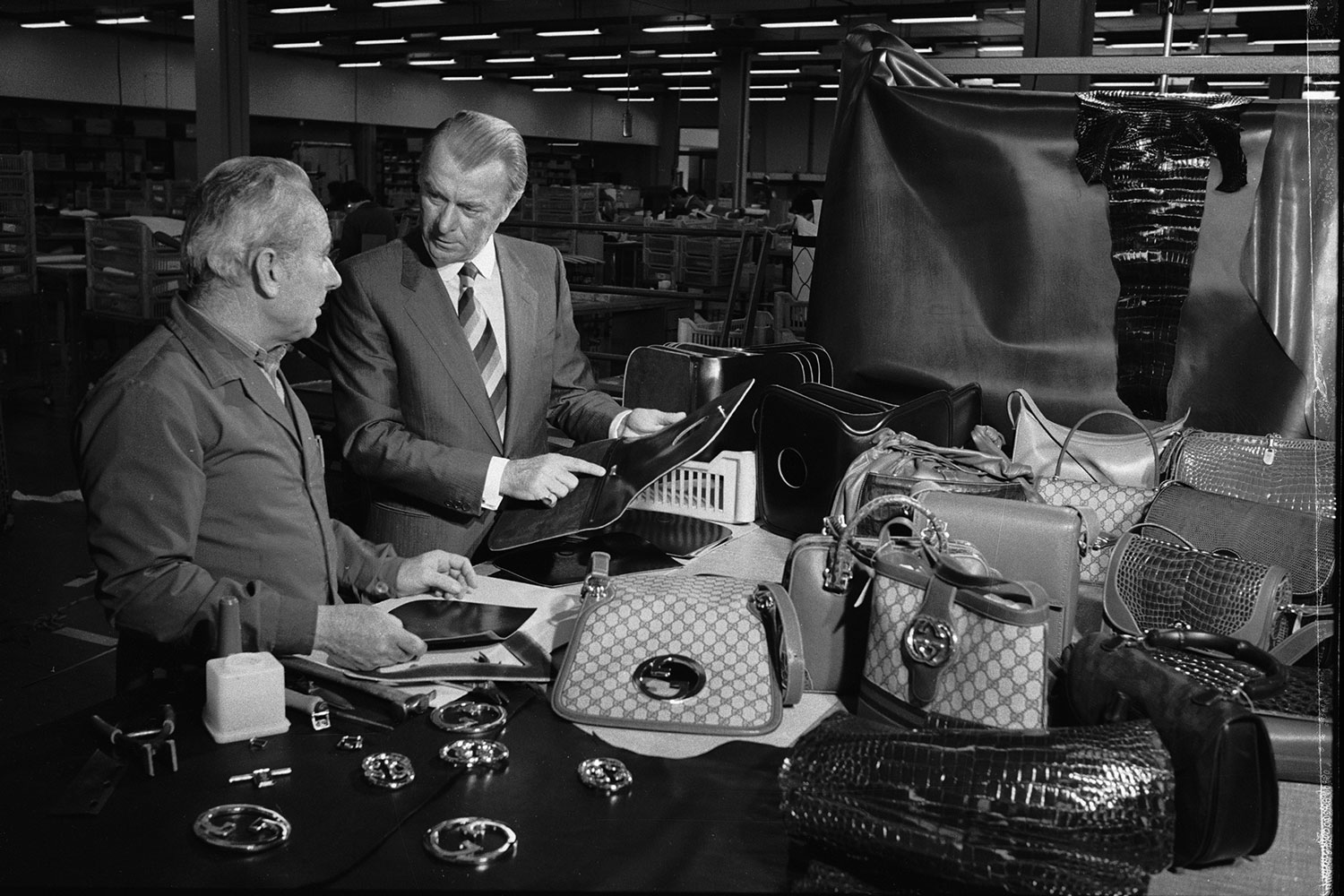Article Content:
What is a Brand Story?
The Importance of a Brand Story
How to Create Your Brand Story
Examples of Brand Stories
In September 2023, Apple announced a quarterly revenue of $89.5 billion, with earnings per share of $1.46, marking a 13% increase compared to the same period last year. Have you ever wondered what makes Apple so irresistibly captivating, inspiring millions of devoted fans worldwide? The secret lies in their Brand Story. Join TRÒN as we explore the powerful narrative that has helped build the mighty Apple empire in the article below.
What is a Brand Story?
Simply put, a brand story is the narrative of a brand’s journey, growth, and mission. It’s more than just dry facts about history or products; it’s an emotional symphony that connects the brand with its customers. Through its story, a brand conveys its core values, vision, and mission, fostering trust and empathy among its audience.
 |
The Importance of a Brand Story
Differentiation:
A brand story shapes how customers perceive a brand and leaves a lasting impression. This not only enhances the brand’s value but also creates a unique and distinctive identity. In a crowded market, a compelling brand story helps you stand out, asserting your brand’s unique essence against competitors.
Emotional Connection:
A brand story serves as a bridge between a business and its customers. It helps customers understand the company’s products and services and creates a spiritual connection. When customers resonate with a brand’s story and align with its values, they feel more attached and loyal. They aren’t just buying a product; they’re buying into the story and values the brand represents. A well-crafted brand story helps you connect with customers on an emotional level, fostering empathy and long-term loyalty.
Building Trust:
When customers perceive the value of a brand story and feel they are part of it, they become strong advocates for the brand. They don’t just buy products or services; they also spread the brand’s message and recommend it to others. A genuine brand story builds trust with customers, making them believe in the quality of your products and services.
Attracting Talent:
A brand story doesn’t just inspire customers; it also attracts talented individuals who want to join and contribute to the brand’s growth. For instance, Google’s story of creativity and innovation has drawn top talent in the tech industry, contributing to its success.
Enhancing Marketing Effectiveness:
A brand story enhances marketing efforts by creating engaging content that captures customers’ attention and effectively communicates the brand message.
Increasing Brand Value:
A brand story boosts brand value by building a reputable, trustworthy, and responsible brand image. For example, Patagonia’s story of social responsibility has established it as a brand committed to the community and environment, thereby increasing its brand value.
Guiding Business Strategy and Decisions:
A brand story is not just a tale told to customers; it is also a crucial part of business strategy. It guides business decisions and actions, helping the company stay on course and achieve long-term goals. This is evident in the success of Lego, whose brand story revolves around promoting creativity and learning through play.
In summary, a brand story is a powerful tool for building a successful brand. By crafting a compelling and authentic brand story, you can connect with customers on an emotional level, build trust, attract talent, and enhance brand value.
 |
How to Create Your Brand Story
Start with Basic Planning:
Before you begin writing your brand story, planning is essential. Ask yourself fundamental questions like "Who are we?" and "What are we doing?". This helps you understand your business’s core identity and objectives.
Example: A fashion company starts by defining itself as a sustainable fashion brand specializing in products made from recycled materials. Their mission is to provide high-quality fashion while minimizing environmental impact.
Add Mission/Purpose, Method, and Vision:
After mapping out your business, clearly define its mission, purpose, method, and vision. The mission is why the business exists, the purpose is the goal it aims to achieve, the method is how the business operates, and the vision is the future the business aspires to create.
Example: The sustainable fashion company’s mission is to build a cleaner fashion industry. Their purpose is to promote awareness of using recycled materials in fashion. Their method is producing fashion items from recycled materials using advanced production technology. Their vision is a world where everyone can wear stylish clothing without harming the environment.
Complete Your Brand Story:
Once you’ve identified the key elements, you can start writing your brand story. Ensure that your story reflects the business’s core values and mission.
Example: The sustainable fashion company could tell the story of how they began by searching for recycled materials and developing relationships with suppliers. They could share their eco-friendly production process and their efforts to create high-quality fashion items. Finally, they might talk about their vision of a sustainable fashion industry and their positive impact on the environment and community.
Highlight Conflict in Your Story:
Consider this story: A girl in a red hood is walking through a forest to visit her sick grandmother, bringing her cakes and fruits. She passes a wolf along the way, and they exchange polite smiles. She arrives at her grandmother’s house, and they have lunch and play a detective game. The grandmother wins by deducing that Colonel Mustard killed Mr. Boddy in the Billiard Room with the candlestick. And that’s the end of the story.
What do you think of this story? Does it keep you on the edge of your seat? Or does it seem quite dull? That’s because there’s no conflict. Nothing unexpected happens, and the wolf doesn’t even try to eat the girl. It doesn’t even go to the grandmother’s house; it barely appears in this version of "Little Red Riding Hood."
Typically, stories revolve around overcoming adversity. The lack of conflict means there’s no drama or emotion for people to connect with. Without drama or an emotional journey, it won’t capture attention or resonate deeply.
Brands might hesitate to reveal their challenges or conflicts, thinking that a perfect story of growth is the best way to convince people they are the ultimate solution with no flaws. In reality, this is a significant misconception because everything (including large corporations) has imperfections. Moreover, people don’t expect perfection because they can relate to their own experiences of adversity, struggle, and overcoming it.
Conflict is key to telling engaging stories, so be honest about the challenges your company has faced and how it has overcome them. The more transparent you are about your flaws, the more people will respect you and feel connected to your brand.
Example: The sustainable fashion company could share the challenges they faced in finding high-quality recycled materials or in convincing consumers about environmental consciousness. They could also tell how they overcame these difficulties and became a role model in the fashion industry.
 |
Don’t Forget to Address the Present and Future Solutions:
Finally, your brand story needs to conclude naturally and engagingly. Make sure to highlight the business’s growth and success, as well as the solutions and direction for the future.
Example: The sustainable fashion company might end their story by talking about their milestones, such as raising environmental awareness in the community and attracting a large customer base.
Examples of Brand Stories
Apple
Apple’s brand story is not just about creating technology products but about a relentless spirit of creativity and innovation. Since its founding in 1976, Apple has consistently positioned itself at the forefront of technology, leading with iconic products like the Macintosh, iPod, iPhone, and iPad. Apple’s mission is not only to create products but to change how people interact with technology, making it simple and convenient for everyone.
Apple’s brand story is one of perseverance and passion in pursuing perfection. Since Steve Jobs returned to the company in 1997, Apple has undergone a significant restructuring and created a series of successful products, such as the MacBook, iPhone, and Apple Watch. Apple is not just a technology company but a symbol of continuous creativity and innovation.
.jpg) |
Coca-Cola
Coca-Cola’s brand story is about connection and unity among people around the world. Since its invention in 1886 by John Pemberton, Coca-Cola has become a symbol of joy and happiness. The story of Coca-Cola is not just about creating a beverage but about creating an experience, a memory. From the sweet cans of Coca-Cola at family gatherings to the images of friends enjoying Coca-Cola together around the world, Coca-Cola has become an essential part of everyday life.
Coca-Cola’s brand story is about connecting and bonding between people, through moments of enjoyment and sharing. From the "Share a Coke" campaign that put people’s names on drink cans to supporting social and cultural activities worldwide, Coca-Cola is not just a beverage brand but a symbol of connection and unity.
 |
Gucci
Gucci’s brand story is about luxury and Italian style. Since its founding in 1921 by Guccio Gucci, Gucci has become a symbol of class and style. The story of Gucci is not just about creating high-end fashion products but about creating a lifestyle and a community of fans worldwide. Gucci is not just a fashion brand but a symbol of confidence and class.
Gucci’s brand story is about passion and commitment to creating quality and stylish products. From creating top-tier handbags, shoes, and apparel to promoting creativity and novelty in fashion, Gucci has become a symbol of Italian class and style worldwide.
 |
In today’s modern business world, a brand story is not just an important part but also a powerful tool to build and strengthen a company’s position. Apple, Coca-Cola, and Gucci are prime examples of creating successful brand stories, from developing groundbreaking products to connecting with customers’ emotions and experiences.
Applying the principles and steps to create a deep and engaging brand story can help any business forge a strong and lasting connection with customers, paving the way for greater business success.
See more:
FROM "ZERO TO HERO": HOW BRANDS BUILD EMPIRES AND BECOME ICONS
8 KEYS TO CREATING A STRONG BRAND IDENTITY
BUILDING YOUR BRAND STORY 2024: A GUIDE FOR STARTUPS AND SMES
TRÒN HOUSE
